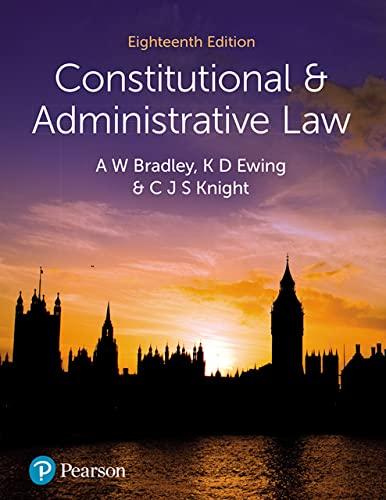Question
Case study #1 Mara is a 22-year-old student attending a publicly funded College in Kingston, Ontario. She is planning to go to a social event
Case study #1
Mara is a 22-year-old student attending a publicly funded College in Kingston, Ontario. She is planning to go to a social event organized by the College for the end of the school year. As a consolidated tradition, every student wishing to attend needs to bring a date. Mara is homosexual and plans to attend with Catherine, her same-sex partner. After reviewing the RSVPs, the college organizers decide to deny Mara and Catherine's participation, on the grounds that the presence of a same-sex couple would be endorsing conducts that are contrary to the religious orientation of the College. Mara believes that this is a violation of their human rights and decides to seek a Court injunction to force the College to admit her and Catherine to the event.
I understand that my submission for this assignment is to be my own individual thought and work. I certify that I have only used the specific case provided to me in this assignment and other content provided directly in this Course. I certify that I have not researched, accessed, nor used any other sources including other students' work for my submission.
Answer the questions 1-3
1. Find the applicable legislation?
2. Cite the section of the Statute you have chosen (sample cite Interpretation Act, R.S.C. 1985, c. I-21, s.1)
3. Provide a brief motivation for your choice.
https://www.canada.ca/en/canadian-heritage/services/how-rights-protected/guide-canadian-charter-rights-freedoms.html#a2f

Step by Step Solution
There are 3 Steps involved in it
Step: 1

Get Instant Access to Expert-Tailored Solutions
See step-by-step solutions with expert insights and AI powered tools for academic success
Step: 2

Step: 3

Ace Your Homework with AI
Get the answers you need in no time with our AI-driven, step-by-step assistance
Get Started


